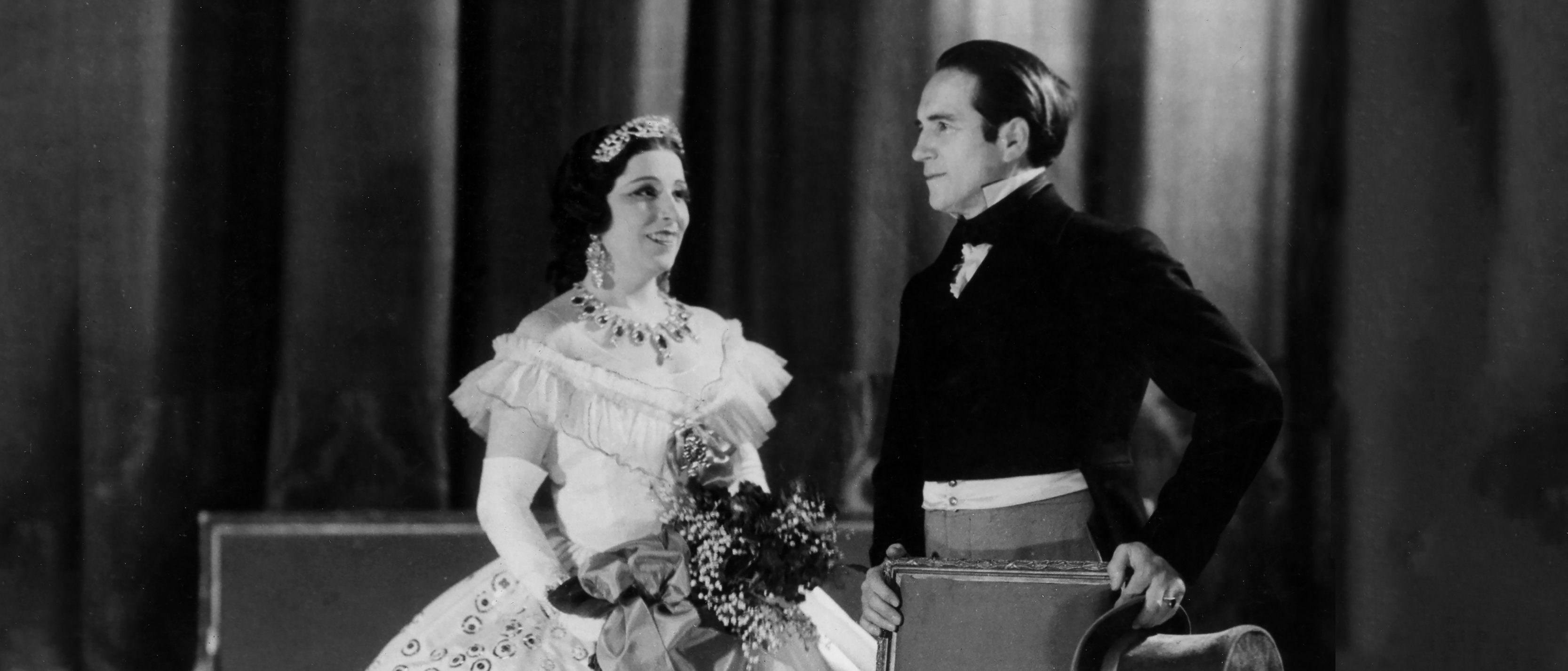
American Commissions and Beyond
After its inaugural decade, the Met’s burgeoning catalog of American works had yet to achieve any successes on a par with the international repertory. As the idea of commissioning began to take shape, Gatti-Casazza reached out to experienced composers who addressed the dearth of English librettos by turning to significant contemporary literary figures.
Deems Taylor’s The King’s Henchman
The Met’s first commission went to composer-critic Deems Taylor, who collaborated with celebrated poet Edna St. Vincent Millay on The King’s Henchman, based on a medieval legend. The 1927 world premiere was enthusiastically received, and the New York Times headline proclaimed that it was “Hailed as Best American Opera.” Charismatic young American baritone Lawrence Tibbett enjoyed a particular triumph, and he would become the star of many new American works over the next decade.
Left: Lawrence Tibbett, lead baritone in Deems Taylor’s The King’s Henchman, 1927.
Photo: Herman Mishkin
Right: Edward Johnson, lead tenor in Deems Taylor’s The King’s Henchman, 1927.
Photo: Herman Mishkin
Librettist Edna St. Vincent Millay, composer Deems Taylor, and tenor Edward Johnson at the time of the Met’s world premiere of The King’s Henchman.
Deems Taylor’s Peter Ibbetson
The first American opera to truly succeed at the Met, The King’s Henchman played for three consecutive seasons, and Deems Taylor was awarded a second commission. Working with actress Constance Collier, Taylor fashioned his own libretto on Peter Ibbetson, a Victorian romance by George Du Maurier. Composed under the influence of “Wagner oddly blended with Debussy” (Lawrence Gilman, Herald-Tribune), Peter Ibbetson was even more successful than Taylor’s previous work and was given 22 performances over four seasons, including the prestigious Opening Night performance in 1933 that celebrated the Met’s Golden Anniversary. Tullio Serafin conducted a brilliant cast that included future general manager Edward Johnson in the title role, Lucrezia Bori, and, again, Lawrence Tibbett. Among American operas, Peter Ibbetson’s performance record at the Met has been surpassed only by that of Porgy and Bess.
Left: Lucrezia Bori and Edward Johnson in Peter Ibbetson, 1931. Designs by Joseph Urban.
RightL Lucrezia Bori in Deems Taylor’s Peter Ibbetson, 1931.
Photo: Herman Mishkin
Left: Edward Johnson in Deems Taylor’s Peter Ibbetson, 1931.
Photo: Herman Mishkin
Right: Lawrence Tibbett in Deems Taylor’s Peter Ibbetson, 1931.
Photo: Carlo Edwards
Howard Hanson’s Merry Mount
Merry Mount, the first opera by Eastman School of Music director Howard Hanson, was the final chapter in Otto Kahn’s prodigious legacy at the Met, which included the first sustained institutionalized support of American opera in the United States. Hanson had built a reputation as an accomplished symphonic composer with a rugged Midwestern style, but the Met declined to offer him a formal commission. His stark Puritan opera, which embellished Nathaniel Hawthorne’s Twice-Told Tales with the demonology of colonial New England religious fanaticism, was admired more for its compelling choruses than distinctive vocal roles. Tullio Serafin conducted a cast that included Göta Ljungberg, Gladys Swarthout, Edward Johnson, and Lawrence Tibbett.
Act III “Vision of Hell” scene from Howard Hanson’s Merry Mount, designed by Jo Mielziner, 1934.
Left: Lawrence Tibbett as Wrestling Bradford, the fanatical preacher in Merry Mount, 1934. “Mr. Tibbett exhibits once more his intelligence and skill as a singing actor.” —New York World Telegram.
Right: Gladys Swarthout as Plentiful Tewke in Howard Hanson’s Merry Mount, 1934.
Searching for an American Style
American Commissions and Beyond
From Commercial Theater to the Met